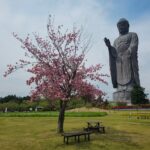Kusatsu Onsen is like a dream come true for hot spring enthusiasts in Japan. Nestled in Gunma prefecture, this town is soaked in history and onsen culture. Here, we’ll spill the beans on what makes Kusatsu Onsen a must-visit – from soaking in its renowned hot springs to exploring the beautiful surroundings. Let’s dive in!
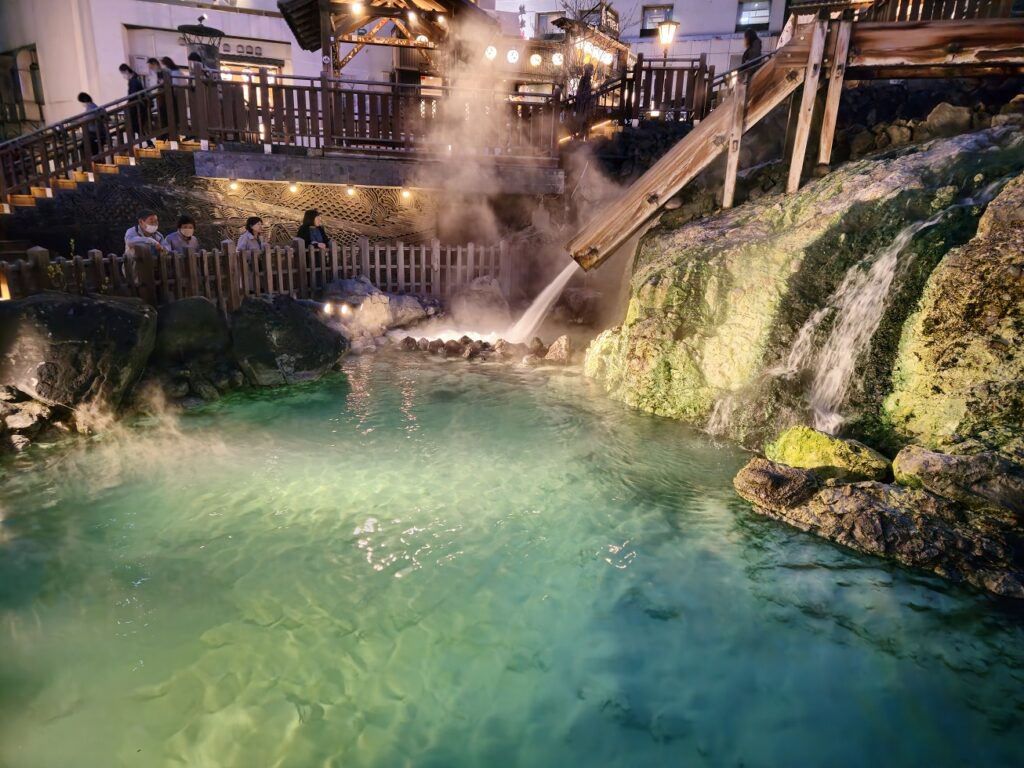
Attractions
Yubatake
The moment you step into Kusatsu Onsen, your eyes are drawn to the Yubatake, the town’s iconic symbol. This massive wooden structure collects hot spring water gushing from the ground at a piping 50 degrees Celsius. The water is cooled and sent to the numerous public and private baths across the village.
The Yubatake is not just a sight to behold; it’s a visual and auditory treat with steam rising and water bubbling. When night falls, it transforms into a magical spectacle with colorful lights illuminating the scene.

Netsu-no-yu
Another highlight in Kusatsu Onsen is the Netsu-no-yu, a venue where they practice yumomi, a time-honored tradition of cooling hot spring water using large wooden sticks while singing a folk song.
You can witness this unique ritual, complete with music and dance, and even join in. The ceremony takes place multiple times a day, and it’s worth the 600 yen (about 4 dollars) cost. These performances, rich in history and folklore, transport you to another era, immersing you in the local culture of Kusatsu Onsen.
Netsu-no-yu also houses a small museum that delves into the history and properties of the onsen.
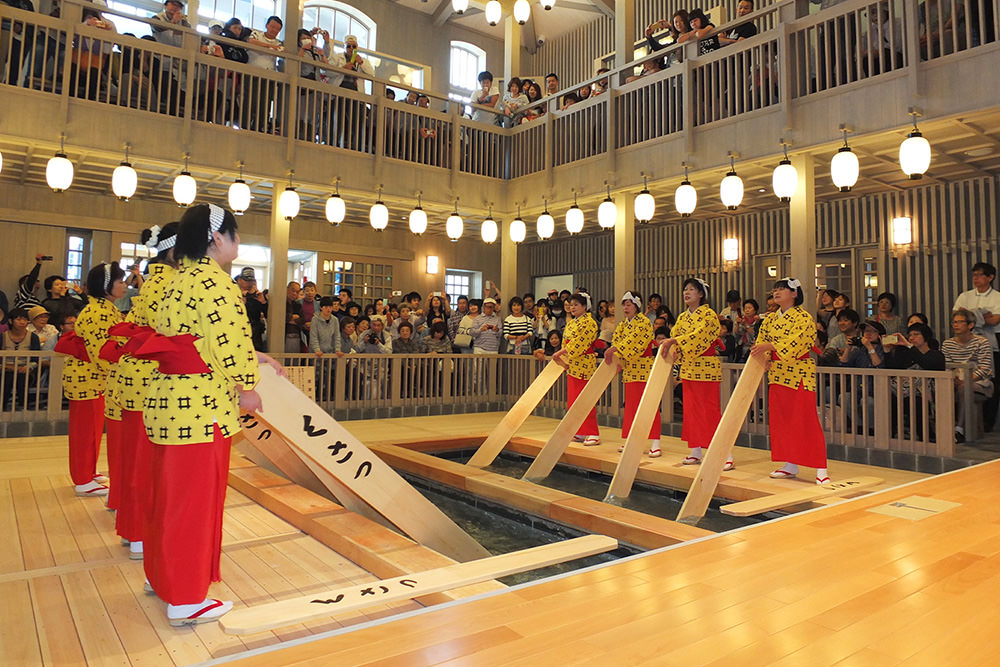
Sai-no-kawara park
This park holds a special significance, believed to be the gathering place for the souls of children who passed away before their parents, where they pray for salvation. Named “dry river of stones“. it alludes to the thermal water river flowing through the park, surrounded by stones stacked by visitors as offerings to the departed children.
The atmosphere here is serene and mystical, allowing you to connect with the natural energy. Monuments and statues dedicated to children, like Jizo, the protector of children’s souls, and Ojizo-sama, a large Jizo known for curing ailments, dot the landscape. The park includes a Buddhist temple and a museum providing insights into Kusatsu onsen’s history and culture.
A standout feature is the Sai-no-kawara Rotenburo, Japan’s largest open-air bath within the park. The mineral-rich water, warm and milky, is believed to bring various health benefits, from improving circulation and relieving stress to purifying both body and soul.
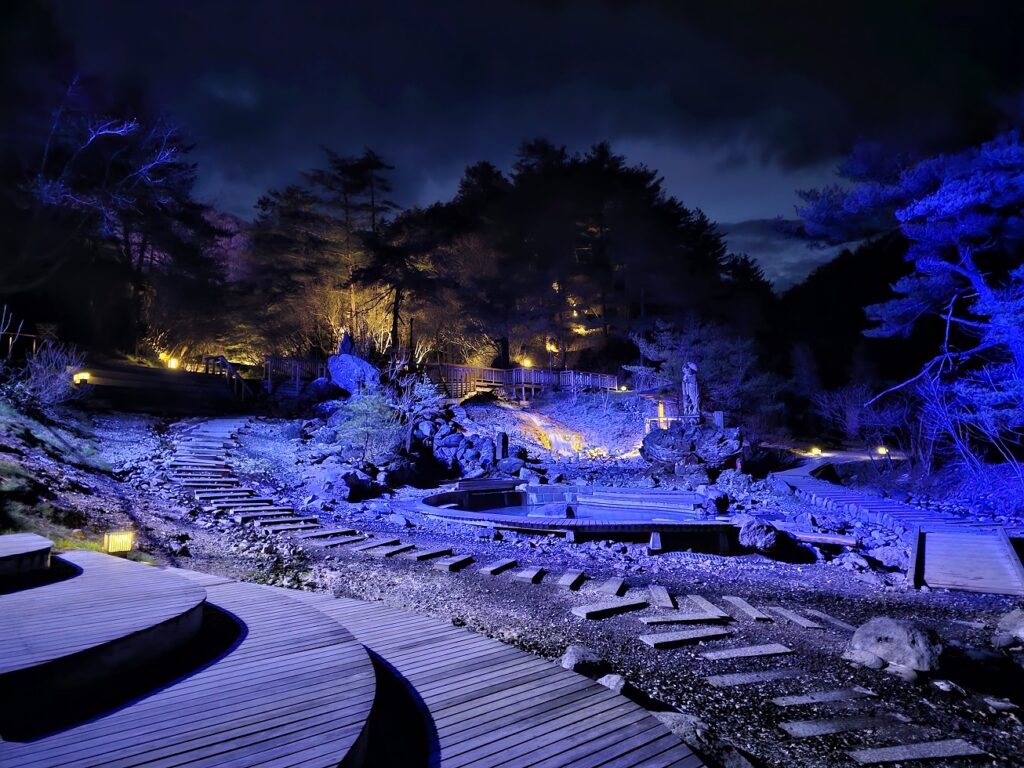
Public and private hot springs
The heart of Kusatsu Onsen lies in its over 100 hot springs scattered across the village. You can relish these springs in communal fountains known as Soto-Yu, offering a tranquil soak amidst natural surroundings. You can dive into the rejuvenating waters and bask in their health benefits.
Public baths like Shirohata-no-yu or Chiyo-no-yu, both free, await, along with private baths available for hourly rental. If you fancy mixed baths like Otaki-no-yu, Goza-no-yu, or Sainokawara, where bathing suits are required, they’re also on the menu. Prices typically hover around 600-800 yen (about 5-6 dollars).
For a more exclusive experience, consider staying in a ryokan, traditional Japanese inns that boast private hot spring baths in each room. Picture yourself unwinding in your own private bath. Ryokans provide a more intimate and personalized encounter with Kusatsu Onsen.
Regardless of your choice, adhere to onsen etiquette: cleanse before entering, refrain from using soap or towels in the water, and respect others’ privacy and silence.
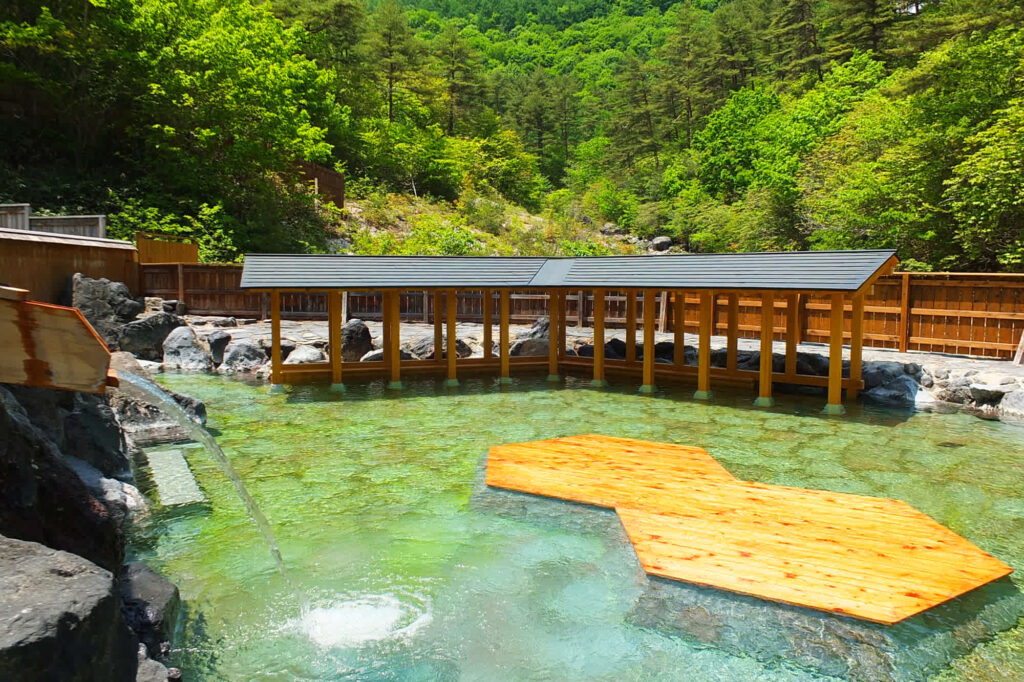
Mount Shirane
Apart from the onsen, Kusatsu boasts other compelling attractions, like Mount Shirane, an active volcano accessible by car or bus. At its summit, you’re treated to views of the crater and the turquoise-hued Lake Yugama.
The Shirane Shrine is also nestled here, dedicated to the god of the volcano, the highest in Honshu, Japan’s main island. The volcano boasts three craters, with the most renowned being Lake Yugama.
While the shrine is simple, it exudes a special charm. A small store offers amulets and souvenirs, and a priest blesses visitors with a sakaki branch, a sacred plant.
A 15-minute walk from the shrine takes you to Lake Yugama, a truly spectacular sight with its deep blue waters contrasting the green mountains. Be cautious, though, as the lake is highly acidic and emits toxic gases. Swimming or approaching the edge is prohibited.
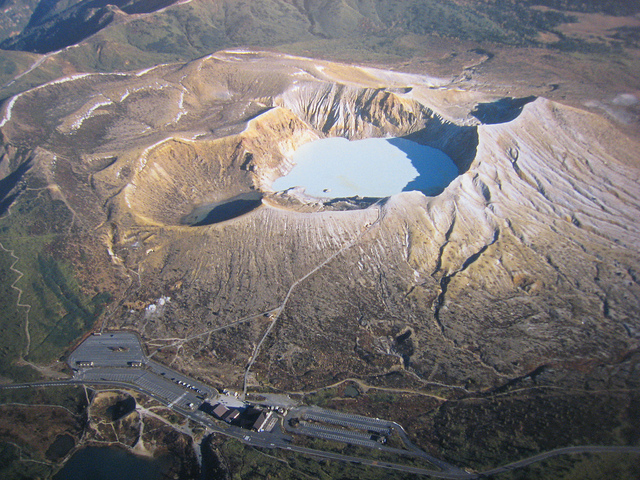
Other places of interest
Another enticing option is to explore the village through various hiking trails that wind through forests, waterfalls, and lakes.
Consider a visit to Saiho-ji temple, home to a stunning Japanese garden. Alternatively, head to the Kusatsu Onsen Ski Resort theme park for winter sports or a scenic Ferris wheel ride.
Additional attractions in Kusatsu Onsen include the hot spring museum and the Shirohata-sha Buddhist temple, featuring a five-story pagoda.
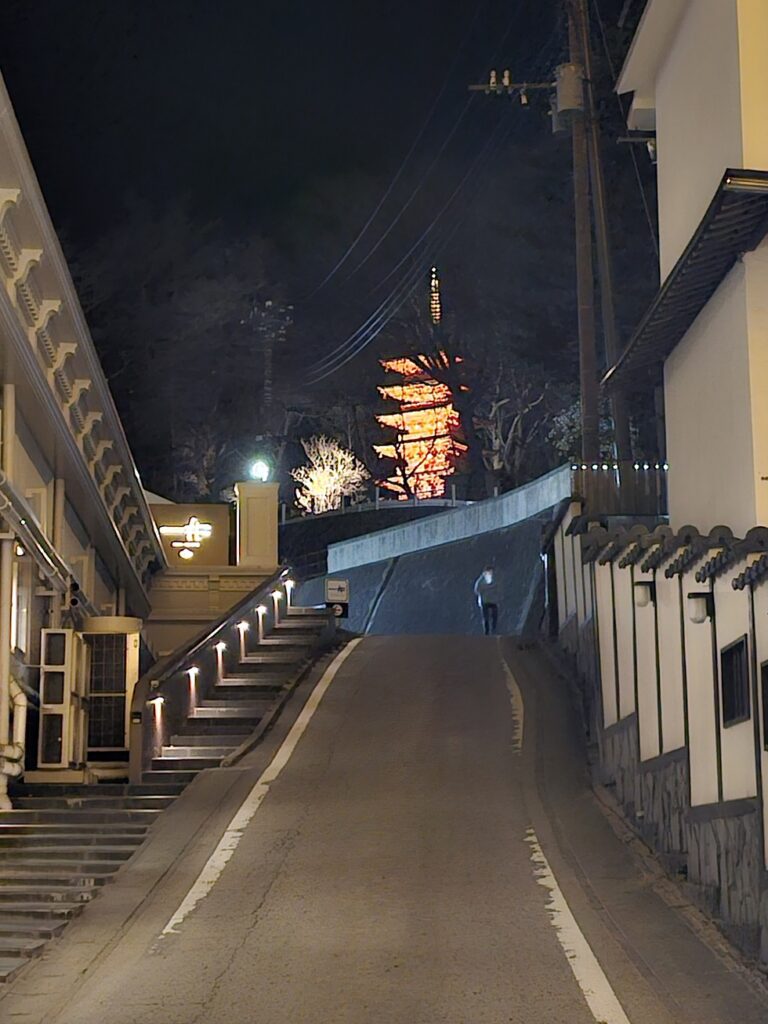
How to get to Kusatsu Onsen
To reach Kusatsu Onsen from Tokyo, the quickest and most comfortable option is to hop on the bullet train (shinkansen) bound for Karuizawa station. This leg of the journey takes around 70 minutes and costs approximately 5,000 yen (about 40 dollars).
From Karuizawa, a bus ride to Kusatsu Onsen follows, lasting about 80 minutes and totaling around 2,100 yen (about 15 dollars). Buses depart roughly every hour.
While the entire trip spans about three hours, the picturesque landscapes along the way make the experience well worthwhile.
Where to stay at Kusatsu Onsen
For accommodations in Kusatsu Onsen, a ryokan is the top choice. Ryokans are traditional Japanese lodgings where you sleep on a tatami (straw mattress) and indulge in local cuisine. Typically, ryokans feature their own hot spring baths, included in the room rate.
Prices vary based on the season and room type but generally range from 12,000 to 20,000 yen (about 100-160 dollars) per person per night. Highly recommended are ryokan Sakurai and Kusatsu Onsen Kusatsu Hotel1913, offering amazing onsens and spectacular breakfast and dinner options!
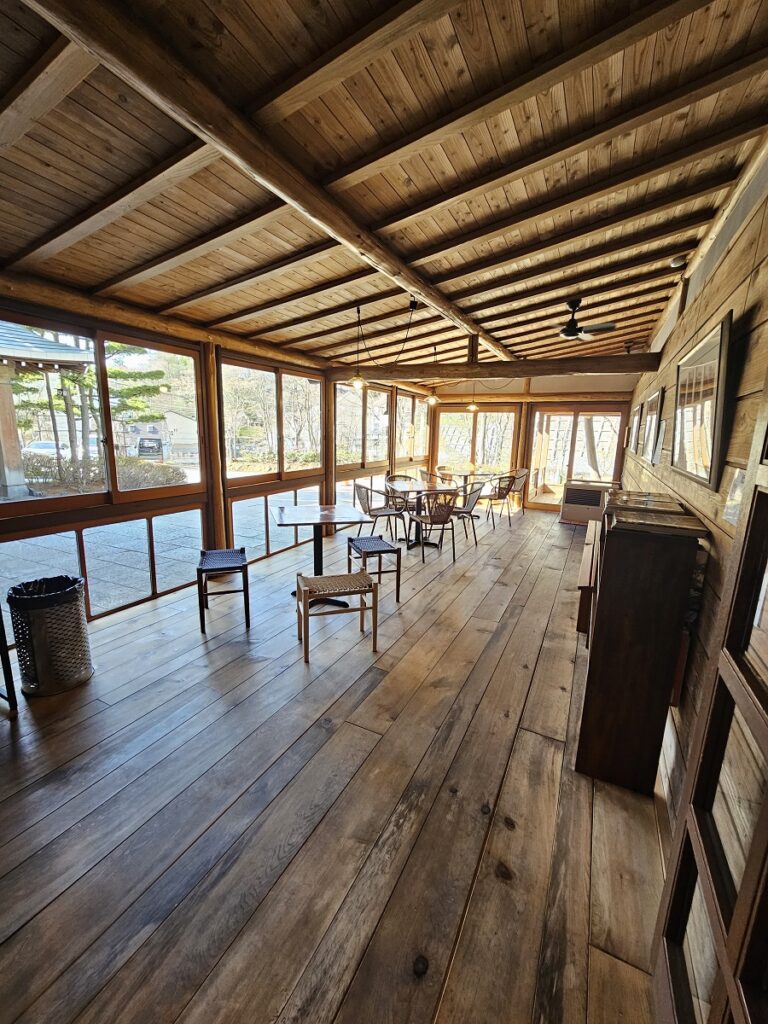
As you can see, Kusatsu Onsen has much to offer for travelers seeking relaxation and a glimpse into Japanese culture. If you decide to visit, consider weekdays or the off-peak season to avoid weekend and holiday crowds. It’s wise to book your accommodation in advance due to high demand. And, of course, don’t forget to bring your camera to capture the most memorable moments of your trip!🤳.


